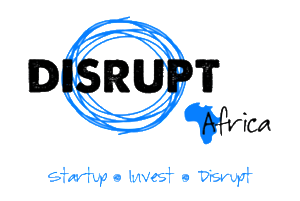To the uninitiated, the world of venture capital is a mysterious one, with many assuming VC fund managers are just rich men and women looking to get even richer.
That isn’t really the case, however, and in episode eight of Disrupt Africa’s “The month in VC” podcast series, powered by Katapult Africa, Hlayisani Capital and ARM Labs Lagos Techstars Accelerator, we got our investor friends to take us through the classic VC business model, and how it works.
“A traditional venture capital model is usually based on an income and diety partnership structure. Essentially what that means is that you will have the people creating the fund, and they are usually split into two entities. One you would call the general partner, and one you would call the fund manager,” said Mat Palin, partner at South African VC firm Hlayisani Capital.
“And then what you have is this partnership agreement that sits in between all of the entities. The general partner would put some capital into this partnership, and then they go around and try to find limited partners, like institutions or family offices who are interested in investing into venture capital. Those people we call the limited partners.”
What is the key difference between a general partner and a limited partner, then?
“The general partner carries all the risk,” Palin says. “So if anything goes materially wrong, the general partner is on the line for the full amount. But a limited partner is only at risk of losing what they put into the partnership.”
That’s that, then. But how does it all work financially?
“The venture capital business generally operates on a management fee and profit-sharing business model. So limited partners, who are essentially investors within the venture capital firm, pay an annual fee for the team to manage that capital and deploy it, to look after the portfolio, nurture it, and exit, giving them a return. On the profit-sharing aspect, they then split the upside with the venture capital company. So the venture capital firm gets compensated through a profit-sharing model at the end of the fund,” said Muthoni Wachira, advisor at Katapult Africa.
Here, we are talking about the 2 and 20 model.
“The two stands for two per cent management fee, which means you can draw down two per cent of your total capital to be used as operational costs for managing the fund. The 20 is they get 20 per cent of the profit at the end of the fund. So once a fund has paid back all the capital, then it shares in 20 per cent of the profit. Eighty per cent will go to the LPs, split proportionately, and the fund manager and its GP will share 20 per cent of the profit,” said Palin.
There is some room for variation, however.
“I’ve seen a diverse range of management fees; I’ve seen no management fee and more carry, but typically the range is from 1.5 to 2.5 per cent. I have seen it go up to four per cent,” said Wachira.
It is usually a requirement for GPs to put their own capital, or capital equivalent, into a fund to align their interests with the LPs.
“Capital equivalent could be investments that they’ve made with their own money, and they’re rolling them into the fund, and that can come at cost or at market rate. But typically if you’re talking about a cash contribution, this ranges from around 0.5 per cent to two per cent, sometimes upwards of three to four per cent. And that ensures that there’s aligned interest between all parties,” said Wachira.
Lifetimes of VC funds can vary, between five year funds and even permanent vehicle structures – though those are unusual.
“The typical lifetime for a fund is 10 years, and that can be extended by another two years if needed – so typically 10 plus two is what you’ll see. I think with the typical structure, and especially if you look at the Africa context, you’re asking how long it will you to deploy that capital,” said Wachira. “So for instance, three to four years is the time that it takes to deploy capital, and then it is about how long it take for you to nurture those startups and find exit opportunities for them. And that’s another five, six, seven years, so looking at that then gives you a 10 plus two year lifecycle.”
There are, in fact, notable similarities between startups and venture capital companies.
“I’ve had that comment to me where a company’s pitching to us and they say “oh, it’s so easy for you, you have all the money and just have to sit there and spend it”. But our life revolves around actually raising money. We pitch almost every day to raise money and get money into our funds,” said Palin.
“The other part then, is the investing, which is the fun part. It’s much more fun spending money than trying to find it. We take it very seriously when people give us money – they are trusting us with money that they’ve worked very hard to earn, so we treat it very, very seriously. And yes that carries a lot of stress, but we reduce that by having processes and systems in place to make sure we’re making really good investment decisions.”


